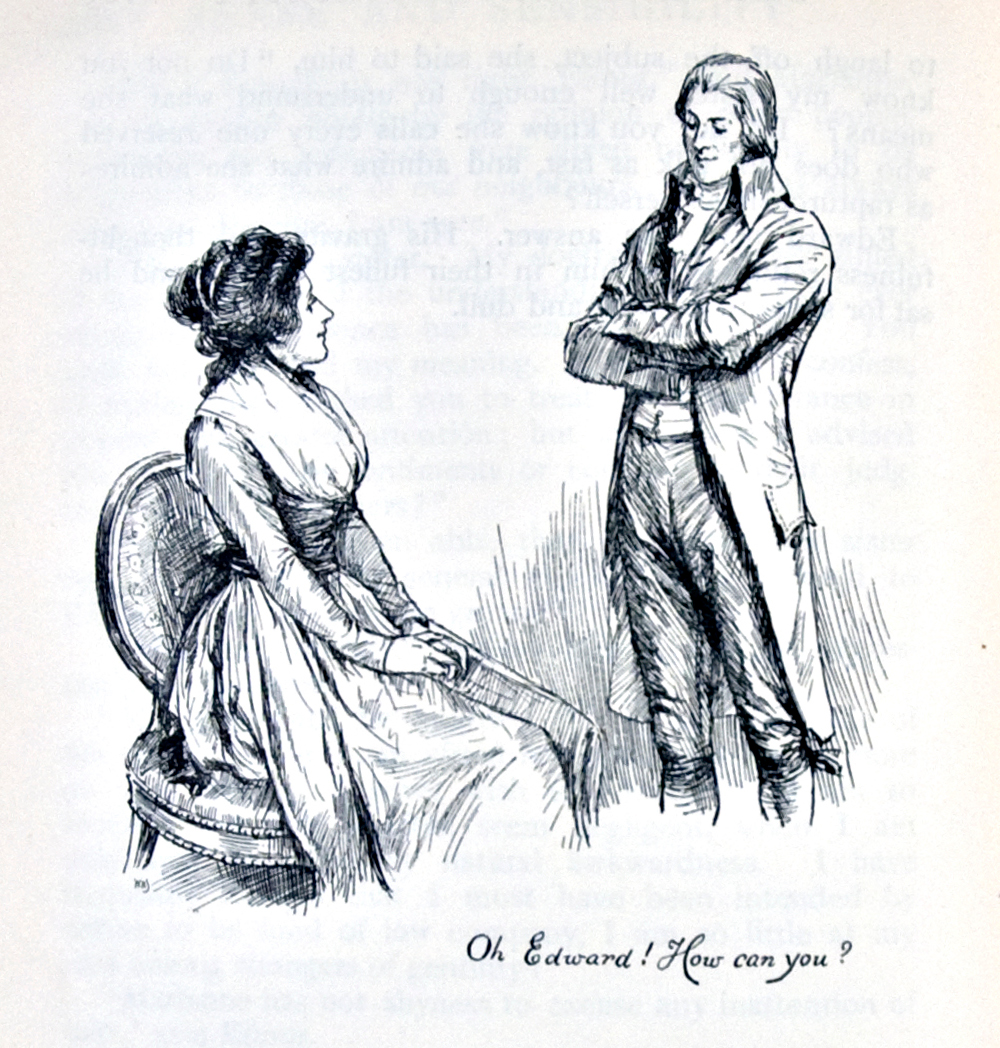|
Sylvester, Or The Wicked Uncle
''Sylvester, or the Wicked Uncle'' is a Regency romance novel by Georgette Heyer. First published by Heinemann, London and Putnam, New York in 1957, it is the story of intelligent and desperate Phoebe who ends up marrying the man she has run away from home to avoid, and whom she has caricatured as the villain in her novel. The book features gentle mockery of the Gothic novel Gothic fiction, sometimes called Gothic horror in the 20th century, is a loose literary aesthetic of fear and haunting. The name is a reference to Gothic architecture of the European Middle Ages, which was characteristic of the settings of ea ... genre and also features Heyer's characteristic strong heroine, with a desire for independence (in Phoebe's case, as a writer), who marries on her own terms. The story is set in 1817-1818.See http://www.georgette-heyer.com/chron.html Plot summary Sylvester, the wealthy Duke of Salford, is considering marriage. He travels to London to discuss the matter with ... [...More Info...] [...Related Items...] OR: [Wikipedia] [Google] [Baidu] |
Georgette Heyer
Georgette Heyer (; 16 August 1902 – 4 July 1974) was an English novelist and short-story writer, in both the Regency romance and detective fiction genres. Her writing career began in 1921, when she turned a story for her younger brother into the novel ''The Black Moth''. In 1925 Heyer married George Ronald Rougier, a mining engineer. The couple spent several years living in Tanganyika Territory and Macedonia before returning to England in 1929. After her novel '' These Old Shades'' became popular despite its release during the General Strike, Heyer determined that publicity was not necessary for good sales. For the rest of her life she refused to grant interviews, telling a friend: "My private life concerns no one but myself and my family."Hodge (1984), p. 70. Heyer essentially established the historical romance genre and its subgenre Regency romance. Her Regencies were inspired by Jane Austen. To ensure accuracy, Heyer collected reference works and kept detailed not ... [...More Info...] [...Related Items...] OR: [Wikipedia] [Google] [Baidu] |
Arthur Barbosa
Artur Ernesto Teixeira de Vasconcelos Barbosa (6 March 1908 – 5 October 1995) was an artist best known for his distinctive cover illustrations for Georgette Heyer and George MacDonald Fraser's ''The Flashman Papers'' novels, which he produced for 17 and 25 years respectively. Although always anglicising his first name, he disliked modern familiarity and preferred being known as Barbosa. Biography He was born in Liverpool, his father was a Portuguese vice-consul, and his mother half-French. He attended St Edward's School, Oxford and later studied at Liverpool School of Art, Heatherley School of Fine Art and the Central School of Art. His first successful exhibitions were in London where he was a founder member of the Pandemonium Group alongside Nicolas Bentley, Eliot Hodgkin and Victor Reinganum. He illustrated for ''Everybody's Weekly'' and the '' Radio Times'' and produced his first book covers for London publishers. In 1928 he worked on the interior of St Andrew's Church, W ... [...More Info...] [...Related Items...] OR: [Wikipedia] [Google] [Baidu] |
English Regency
The Regency era of British history officially spanned the years 1811 to 1820, though the term is commonly applied to the longer period between and 1837. King George III succumbed to mental illness in late 1810 and, by the Regency Act 1811, his eldest son George, Prince of Wales, was appointed prince regent to discharge royal functions. When George III died in 1820, the Prince Regent succeeded him as George IV. In terms of periodisation, the longer timespan is roughly the final third of the Georgian era (1714–1837), encompassing the last 25 years or so of George III's reign, including the official Regency, and the complete reigns of both George IV and his brother William IV. It ends with the accession of Queen Victoria in June 1837 and is followed by the Victorian era (1837–1901). Although the Regency era is remembered as a time of refinement and culture, that was the preserve of the wealthy few, especially those in the Prince Regent's own social circle. For the masses, p ... [...More Info...] [...Related Items...] OR: [Wikipedia] [Google] [Baidu] |
Romance Novel
A romance novel or romantic novel generally refers to a type of genre fiction novel which places its primary focus on the relationship and romantic love between two people, and usually has an "emotionally satisfying and optimistic ending." Precursors include authors of literary fiction, such as Samuel Richardson, Jane Austen, and Charlotte Brontë. There are many subgenres of the romance novel, including fantasy, gothic, contemporary, historical romance, paranormal fiction, and science fiction. Although women are the main readers of romance novels a growing number of men enjoy them as well. The Romance Writers of America cite 16% of men read romance novels. "Many people today don’t realize that romance is more than a love story. Romance can be a complex plotline with a setting from the past in a remote, faraway place. Instead of focusing on a love story, it idealizes values and principles that seem lost in today’s world of technology and instant gratification. However, roma ... [...More Info...] [...Related Items...] OR: [Wikipedia] [Google] [Baidu] |
Heinemann (book Publisher)
William Heinemann Ltd., with the imprint Heinemann, was a London publisher founded in 1890 by William Heinemann. Their first published book, 1890's ''The Bondman'', was a huge success in the United Kingdom and launched the company. He was joined in 1893 by Sydney Pawling. Heinemann died in 1920 and Pawling sold the company to Doubleday, having worked with them in the past to publish their works in the United States. Pawling died in 1922 and new management took over. Doubleday sold his interest in 1933. Through the 1920s, the company was well known for publishing works by famous authors that had previously been published as serials. Among these were works by H. G. Wells, Rudyard Kipling, W. Somerset Maugham, George Moore, Max Beerbohm, and Henry James, among others. This attracted new authors to publish their first editions with the company, including Graham Greene, Edward Upward, J.B. Priestley and Vita Sackville-West. Throughout, the company was also known for its classics an ... [...More Info...] [...Related Items...] OR: [Wikipedia] [Google] [Baidu] |
Hardcover
A hardcover, hard cover, or hardback (also known as hardbound, and sometimes as case-bound) book is one bound with rigid protective covers (typically of binder's board or heavy paperboard covered with buckram or other cloth, heavy paper, or occasionally leather). It has a flexible, sewn spine which allows the book to lie flat on a surface when opened. Modern hardcovers may have the pages glued onto the spine in much the same way as paperbacks. Following the ISBN sequence numbers, books of this type may be identified by the abbreviation Hbk. Hardcover books are often printed on acid-free paper, and they are much more durable than paperbacks, which have flexible, easily damaged paper covers. Hardcover books are marginally more costly to manufacture. Hardcovers are frequently protected by artistic dust jackets, but a "jacketless" alternative has increased in popularity: these "paper-over-board" or "jacketless" hardcover bindings forgo the dust jacket in favor of printing the cove ... [...More Info...] [...Related Items...] OR: [Wikipedia] [Google] [Baidu] |
Paperback
A paperback (softcover, softback) book is one with a thick paper or paperboard cover, and often held together with adhesive, glue rather than stitch (textile arts), stitches or Staple (fastener), staples. In contrast, hardcover (hardback) books are bound with cardboard covered with cloth, leather, paper, or plastic. Inexpensive books bound in paper have existed since at least the 19th century in such forms as pamphlets, yellow-backs, yellowbacks, dime novels, and airport novels. Modern paperbacks can be differentiated from one another by size. In the United States, there are "mass-market paperbacks" and larger, more durable "trade paperbacks". In the United Kingdom, there are A-format, B-format, and the largest C-format sizes. Paperback editions of books are issued when a publisher decides to release a book in a low-cost format. Lower-quality paper, glued (rather than stapled or sewn) bindings, and the lack of a hard cover may contribute to the lower cost of paperbacks. Paperb ... [...More Info...] [...Related Items...] OR: [Wikipedia] [Google] [Baidu] |
Regency Romance
Regency romances are a subgenre of romance novels set during the period of the British Regency (1811–1820) or early 19th century. Rather than simply being versions of contemporary romance stories transported to a historical setting, Regency romances are a distinct genre with their own plot and stylistic conventions. These derive not so much from the 19th-century contemporary works of Jane Austen, but rather from Georgette Heyer, who wrote over two dozen novels set in the Regency starting in 1935 until her death in 1974, and from the fiction genre known as the novel of manners. In particular, the more traditional Regencies feature a great deal of intelligent, fast-paced dialogue between the protagonists and very little explicit sex or discussion of sex. Subgenres Many readers and writers of Regency romance make a distinction between "Traditional Regency Romance" and "Regency Historical". Many authors have started by writing Traditionals and subsequently written Historicals, incl ... [...More Info...] [...Related Items...] OR: [Wikipedia] [Google] [Baidu] |
Gothic Novel
Gothic fiction, sometimes called Gothic horror in the 20th century, is a loose literary aesthetic of fear and haunting. The name is a reference to Gothic architecture of the European Middle Ages, which was characteristic of the settings of early Gothic novels. The first work to call itself Gothic was Horace Walpole's 1764 novel ''The Castle of Otranto'', later subtitled "A Gothic Story". Subsequent 18th century contributors included Clara Reeve, Ann Radcliffe, William Beckford (novelist), William Thomas Beckford, and Matthew Gregory Lewis, Matthew Lewis. The Gothic influence continued into the early 19th century, works by the Romantic poetry, Romantic poets, and novelists such as Mary Shelley, Charles Maturin, Walter Scott and E. T. A. Hoffmann frequently drew upon gothic motifs in their works. The early Victorian literature, Victorian period continued the use of gothic, in novels by Charles Dickens and the Brontë family, Brontë sisters, as well as works by the American ... [...More Info...] [...Related Items...] OR: [Wikipedia] [Google] [Baidu] |
1957 British Novels
1957 ( MCMLVII) was a common year starting on Tuesday of the Gregorian calendar, the 1957th year of the Common Era (CE) and ''Anno Domini'' (AD) designations, the 957th year of the 2nd millennium, the 57th year of the 20th century, and the 8th year of the 1950s decade. Events January * January 1 – The Saarland joins West Germany. * January 3 – Hamilton Watch Company introduces the first electric watch. * January 5 – South African player Russell Endean becomes the first batsman to be dismissed for having ''handled the ball'', in Test cricket. * January 9 – British Prime Minister Anthony Eden resigns. * January 10 – Harold Macmillan becomes Prime Minister of the United Kingdom. * January 11 – The African Convention is founded in Dakar. * January 14 – Kripalu Maharaj is named fifth Jagadguru (world teacher), after giving seven days of speeches before 500 Hindu scholars. * January 15 – The film '' Throne of Blood'', Akira Kurosawa's reworking of ''Macbeth'', is r ... [...More Info...] [...Related Items...] OR: [Wikipedia] [Google] [Baidu] |
Novels By Georgette Heyer
A novel is a relatively long work of narrative fiction, typically written in prose and published as a book. The present English word for a long work of prose fiction derives from the for "new", "news", or "short story of something new", itself from the la, novella, a singular noun use of the neuter plural of ''novellus'', diminutive of ''novus'', meaning "new". Some novelists, including Nathaniel Hawthorne, Herman Melville, Ann Radcliffe, John Cowper Powys, preferred the term "romance" to describe their novels. According to Margaret Doody, the novel has "a continuous and comprehensive history of about two thousand years", with its origins in the Ancient Greek and Roman novel, in Chivalric romance, and in the tradition of the Italian renaissance novella.Margaret Anne Doody''The True Story of the Novel'' New Brunswick, NJ: Rutgers University Press, 1996, rept. 1997, p. 1. Retrieved 25 April 2014. The ancient romance form was revived by Romanticism, especially the historica ... [...More Info...] [...Related Items...] OR: [Wikipedia] [Google] [Baidu] |
Historical Novels
Historical fiction is a literary genre in which the plot takes place in a setting related to the past events, but is fictional. Although the term is commonly used as a synonym for historical fiction literature, it can also be applied to other types of narrative, including theatre, opera, cinema, and television, as well as video games and graphic novels. An essential element of historical fiction is that it is set in the past and pays attention to the manners, social conditions and other details of the depicted period. Authors also frequently choose to explore notable historical figures in these settings, allowing readers to better understand how these individuals might have responded to their environments. The historical romance usually seeks to romanticize eras of the past. Some subgenres such as alternate history and historical fantasy insert intentionally ahistorical or speculative elements into a novel. Works of historical fiction are sometimes criticized for lack of authe ... [...More Info...] [...Related Items...] OR: [Wikipedia] [Google] [Baidu] |






